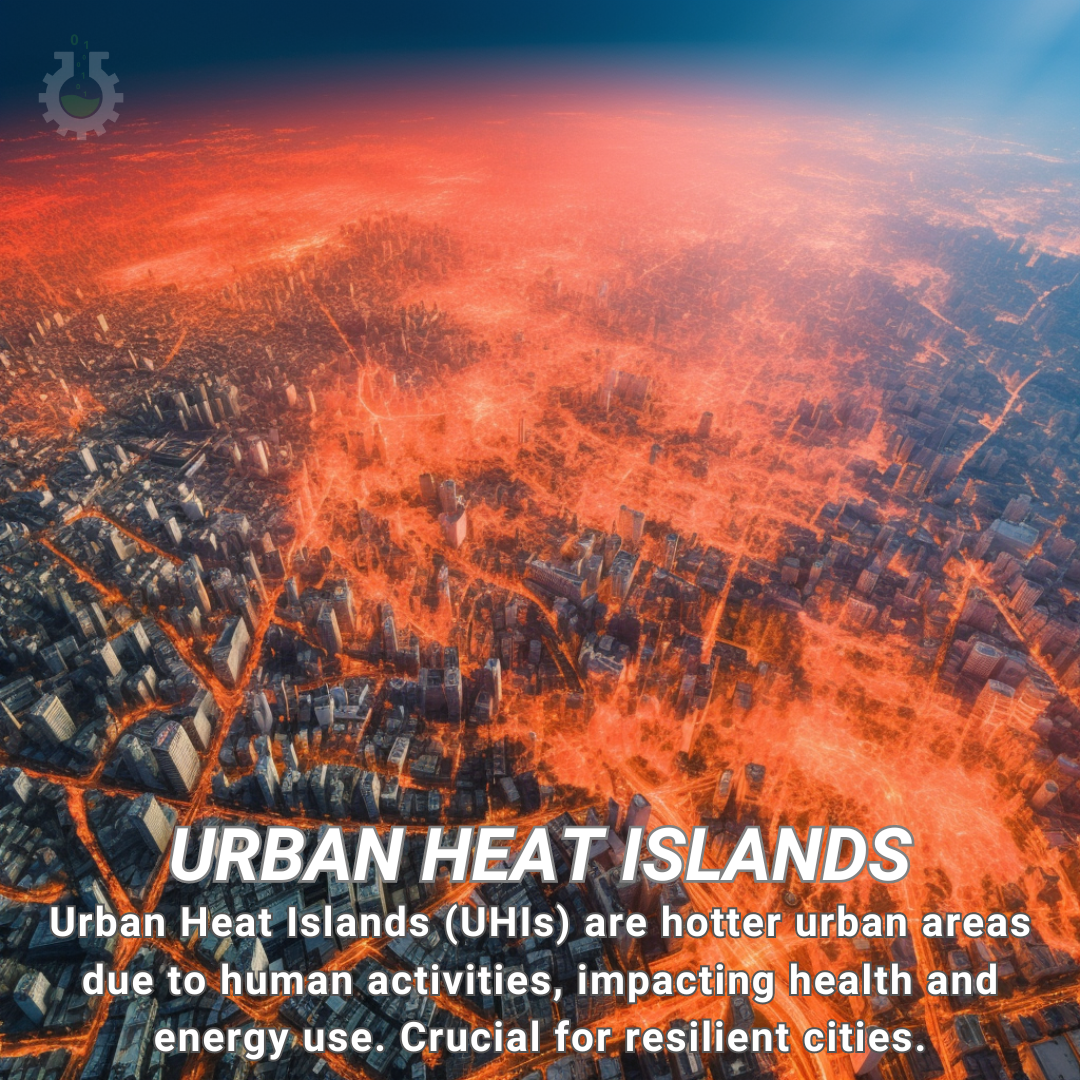February 14, 2024
Climate Change Poster Collection of the Day – Urban Heat Islands (UHIs)
Book a Demo
Today’s Climate Change Poster Collection highlights Urban Heat Islands (UHIs), represent a crucial area of study for climate scientists, urban planners, and environmentalists alike. These are defined as metropolitan areas that stand significantly warmer in comparison to the surrounding rural environments. The primary reason for this is urban development and the subsequent waste heat produced from energy use.
The formation of heat islands is largely attributed to the replacement of vegetation with heat-absorbing materials like asphalt and concrete, used extensively in the construction of roads and buildings. This scenario can occur year-round, with the effects being particularly pronounced during clear, calm evenings. As rural areas cool off faster than cities, the heat contrast becomes easily noticeable.
Several factors contribute to the formation of UHIs. The size and shape of cities, for instance, play a significant role. Urban deserts – areas with minimal or no vegetation – further exacerbate the heat island effect. Other contributing factors include the “canyon effect” of city buildings – wherein the heat gets trapped between high-rise structures, the humidity effects, urban haze, and human-produced heat.
The UHI effect has a direct correlation with global warming. It intensifies the warming effect, making urban areas more susceptible to higher temperatures and stronger heat waves. A concerning projection is that by 2050, the percentage of urban dwellers worldwide is expected to reach 70%. Such an increase in urbanization will likely enhance the heat island effect and its impact on global warming.
One of the immediate implications of UHIs is the increased demand for air conditioning during heat waves. However, if the energy required for air conditioning is derived from fossil fuels, this can lead to higher emissions of heat-trapping greenhouse gases. The cycle continues – the increased demand for air conditioning contributes to climate change, which in turn, intensifies the UHI effect.
The relationship between Urban Heat Islands and global warming is cyclic and complex. Rapid urbanization and the resulting UHIs are contributing to global warming while also being exacerbated by it. As we navigate through this climate crisis, understanding and addressing the UHI effect becomes even more critical.
Discover an inspiring collection of climate change poster.



